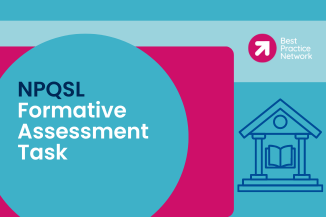
Developing Collaborative Learning
NPQSL Participant
Question
Write a report for the headteacher which:
A. Makes three recommendations for the further development of collaborative learning
B. Outlines your rationale for your three reccomendations, and
C. Briefly describes some of the challenges of implementing your proposed recommendations and how you will address them.
Recent observations indicate that most subject areas include collaborative learning activities. The approach to the organisation of this type of activity was shown to be generally inconsistent across the subjects, demonstrating a lack of rigour and structure for the most part and affecting student experience and potential outcomes. More guidance and support are required in this area for teachers to maximise impact on student learning.
To create a more structured and consistent environment for students, the following recommendations have been highlighted:
- Collaborative Learning Implementation Plan – This plan should be recognised as a whole-school long term goal and stated as a school development target. It should outline the issues raised and why it is being addressed, creating a shared understanding for staff. Evidence based approaches and strategies, along with expected outcomes, should be shared and discussed as part of the staff training/CPD.
- Staff Training/CPD – Training should include information on approaches to collaborative learning techniques. Focus should be given to Peer Tutoring, including Paired work/Small Groups and guidelines around student groupings, the benefits to tutors and tutees, the research around the most effective ways to implement collaborative learning strategies and the suggested time frames required. Training and information on the careful consideration of student placement within groups, the engagement of students and flexibility of groups is extremely important if genuine progress is to be made. Teachers should also aim to use reforming questions and scaffolding to structure group work, focusing on prior knowledge and clear criteria for positive outcomes.
- Monitoring and Evaluating – To support staff it is important to follow up regularly in a number of ways without overwhelming. This could take place through learning walks, line management meetings or coaching conversations. It would be useful to ask staff to reflect or share good practice and investigate the impact any adapted approaches may have had in their classroom, student experience and on data outcomes.
Implementation takes time and ideally completed over the course of a whole school year. The time given to initial staff CPD will be significant and time for planning, reflection and feedback are important and must be addressed. There is also the consideration of staff buy-in, motivation to improve practice and flexibility. In addition, the financial costs of CPD must also be considered.
To reduce the impact of some of these issues, it is important to be clear and consistent with staff. The implementation plan will need to outline the aims, purpose and approaches, as well as a proposed timeline. Additional training and sharing of good practise could be done in a number of ways, e.g. in regular weekly briefing times, short session within the current staff meeting times and followed up in line management meetings. Heads of Department could also help to monitor/quality assure the overall effectiveness of the project through lesson observations or learning walks. Staff could also be directed to reading materials or online CPD where appropriate and share resources. This may also help to keep costs down and the impact high.

